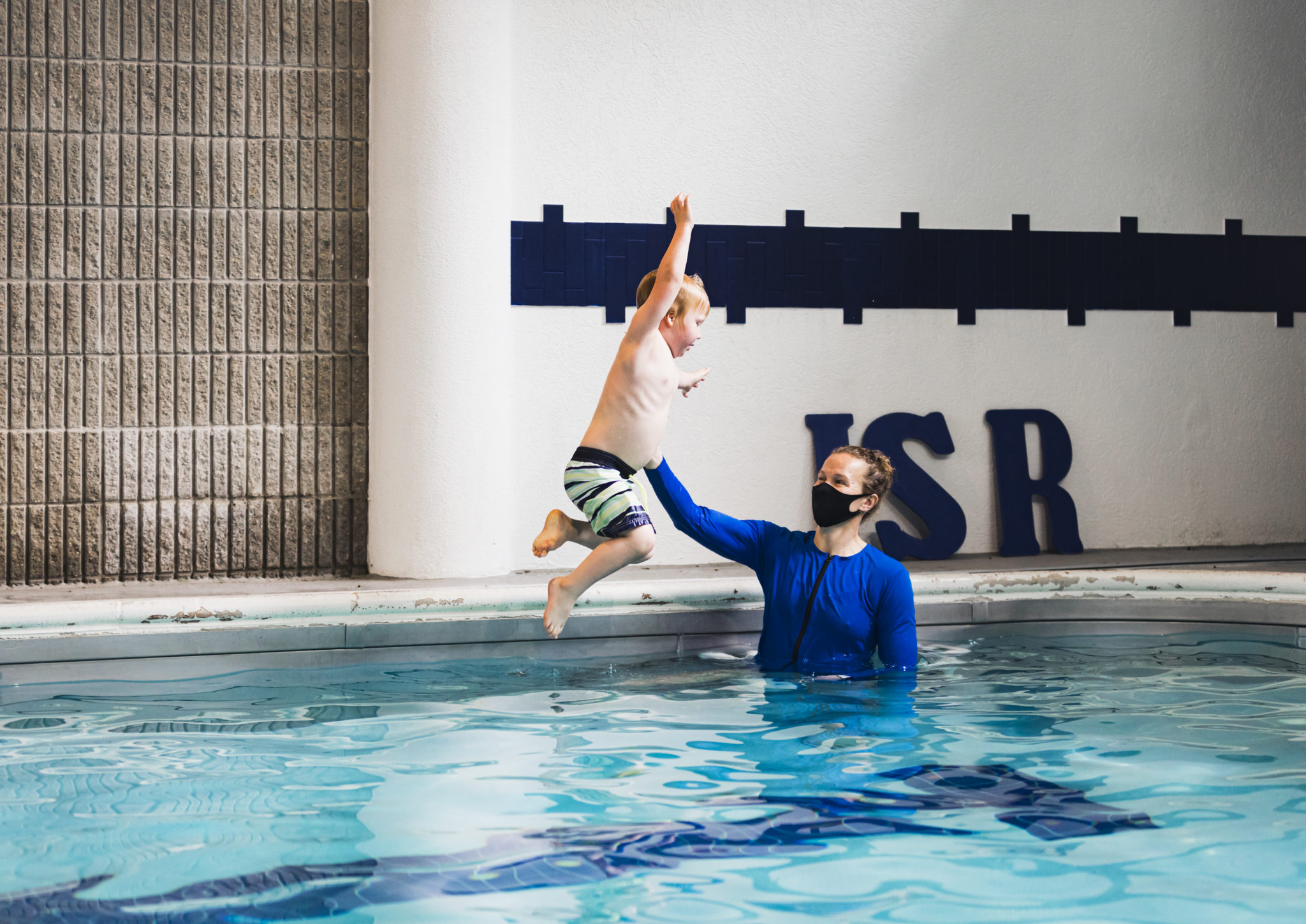Story & Photos Provided by Infant Swim Resources
Summer is here in Indiana! While drowning has no season, summer means more opportunities for your child to find their way to the water unsupervised. Drowning is the number one cause of accidental death in children ages 1 to 4. According to the CDC, in 2014, one-third of children 1-4 years old who died from an unintentional injury, died from drowning. Below are ways to ensure your kids are able to stay safe and have fun in the water this summer.
Layers of Protection
Over half of all drownings occur during non-swimming times. So you need to be prepared and diligent anytime there is water nearby. Water safety is an essential component of any swimming lesson for children. By incorporating water safety into swimming lessons, children can develop a greater appreciation for the potential risks of swimming and become more responsible and confident swimmers. If you are looking for a backyard swim lesson, click here now.
The key to water safety is multiple layers of protection. Unlike in the movies, drowning is fast and silent. However, drowning is completely preventable. As a parent, you know that children are crafty and quick so it is important to have as many barriers as possible between your child and the water. If one layer fails, another should be in place.
1. Effective supervision – The most critical line of defense is adult supervision. No level of aquatic skill can replace active supervision. While affective supervision is crucial, 83% of drownings occurred while children were under adult supervision so it should not be the only thing you rely on.
2. Barriers – When effective supervision fails, additional barriers like self- locking fences or Lattice Screening, pool covers, and door locks to keep children away from water or alert you if they get out. A four-sided isolation fence (separating the pool area from the house and yard) reduces a child’s risk of drowning 83% compared to three-sided property-line fencing. You may get expert help from a professional fence company if you are planning to install a fence. You have to remain diligent with these barriers as well. Do not prop open gates, avoid dog doors, close the pool anytime you are not poolside.
3. Pool Alarms – If your child reaches the water, pool alarms can alert you because every second counts.
4. Survival Swim Lessons – The last line of defense should be your child’s ability to self-rescue. If your child reaches the water,, they need to know how to get out of the water or rest, float and get air. Research has shown that participation in formal swimming lessons can reduce the risk of drowning among children aged 1 to 4 years.
5. CPR – If your child is ever missing, look in the water first. The faster CPR is started, the better the chance of improved outcomes. CPR has been shown to save lives and improve outcomes in drowning victims.
Survival Swim Lessons vs. Traditional Swim Lessons
The American Pediatric Association recommends children start swim lessons at 1 year of age. However, when looking at swim lessons for your child, it is important to note that not all swim lessons are the same. Consider the following when you are starting your search.
1. Goals – Can your instructor tell you what your child will learn at the end of lessons? Traditional swim lessons often focus on “water acclimation” until kids are about 2 years old. Survival swim lessons will teach children starting as young as 6 months to roll to their back and float until help arrives. Children that are strong walkers can learn the swim-float-swim sequence to get themselves to the side. Consider this, if you are teaching your child that it is fun to jump in the pool, what would happen if you weren’t there to catch them?
2. Age – If your child is mobile, they can find their way to the water. At what age will your child learn to interact independently in the water?
3. Timing – What is the time frame of lessons? There should be a clear time frame for when your child will learn these skills. While traditional swim lessons will continue indefinitely as your child may progress through various levels, survival swim lessons typically take six weeks and at the end, every child must demonstrate their ability to self-rescue in swim gear, summer clothes and fall/winter clothes. While children that complete survival swim lessons can continue on to strengthen their swimming skills and add in strokes, they will retain the ability to self-rescue at the end of lessons. There should be noticeable progress happening in weeks, not months or years.
4. Training – What training does your instructor have? An 18 month old is going to learn differently from a 5 year old. What kind of training does your instructor have to recognize and address these differences? Learning to swim can save your child’s life, who teaches this skill will vastly impact the way they learn and how quickly they learn it.
Summer is a great time to get out and enjoy the pool. Regardless of where you go, keep the above tips & tricks in mind to make sure everyone in your party is safe!






